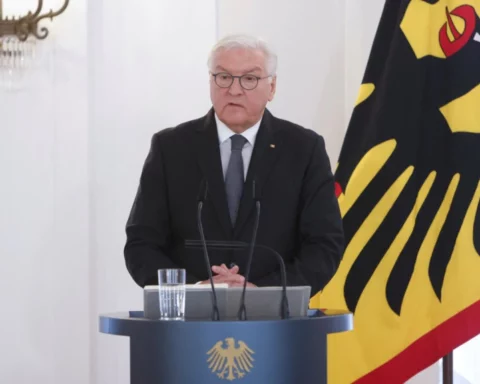Seventy-five years after the end of World War II in Europe, photographs capture the devastation wrought on the Hungarian capital, Budapest, during one of Europe’s most overlooked battles.
Click or tap on the images to reveal the same scene in 2020.

The Danube River flows under the Szechenyi Chain Bridge, which was intentionally destroyed by Nazi-led forces to slow the advance of the Red Army.
Hungary was allied with Nazi Germany during World War II and tens of thousands of its soldiers fought alongside Nazi troops in Soviet territory, including during the battle for Stalingrad — a major turning point in the war. For seven weeks at the end of 1944 and beginning of 1945, Soviet and Romanian troops encircled and then fought their way into Nazi-held Budapest, assisted by U.S. airpower.

A view of devastated Budapest from the Fisherman’s Bastion. A reported 80 percent of buildings in the center of the Hungarian capital were damaged or destroyed during the siege.

Soviet Red Army troops march near the center of Budapest. Stalin urged his generals to take the city before his meeting with other Allied leaders began in Yalta on February 4, 1945.

A shop burns as the Red Army advances into central Budapest.

Buda Castle (left) along with churches and other buildings that were badly damaged during the war.
As Stalin was demanding impossible speed from his generals, Hitler commanded his men to hold Budapest at all costs. Hungary held oil supplies that were vital to the Nazi war machine.

A dead German soldier lies on Kalvin Ter in central Budapest.

Buda Castle’s main entrance, which was not rebuilt. The castle was the last major stronghold of Nazi and Hungarian troops and was hammered with Soviet artillery fire from across the river.

An entrance to Matthias Church
The attacking Soviet and Romanian troops outnumbered the fascist forces by about 4 to 1.

An angel monument — erected in 1936 to commemorate the recapture of nearby Buda Castle from Ottoman Turks 250 years earlier — is one of the only intact objects in this city square.

Temporary pontoon bridges stretch across the Danube. All bridges across the river were destroyed by Nazi-led forces as the Red Army advanced from the east (the right side of this photo).

A stone lion lies in the rubble of the Szechenyi Chain Bridge after its destruction by retreating Nazis. The bridge was reopened in 1949 after four years of reconstruction.

Residential buildings near Buda Castle that were destroyed in the fighting. It’s estimated that some 38,000 civilians died in the brutal battle for the city.

Red Army soldiers mill around the destroyed Elisabeth Bridge, which was later rebuilt without architectural flourishes in the 1960s under communist rule. After the decades of misery inflicted on the country by Nazi, then communist, rule, Hungary finally regained its independence in 1989.






